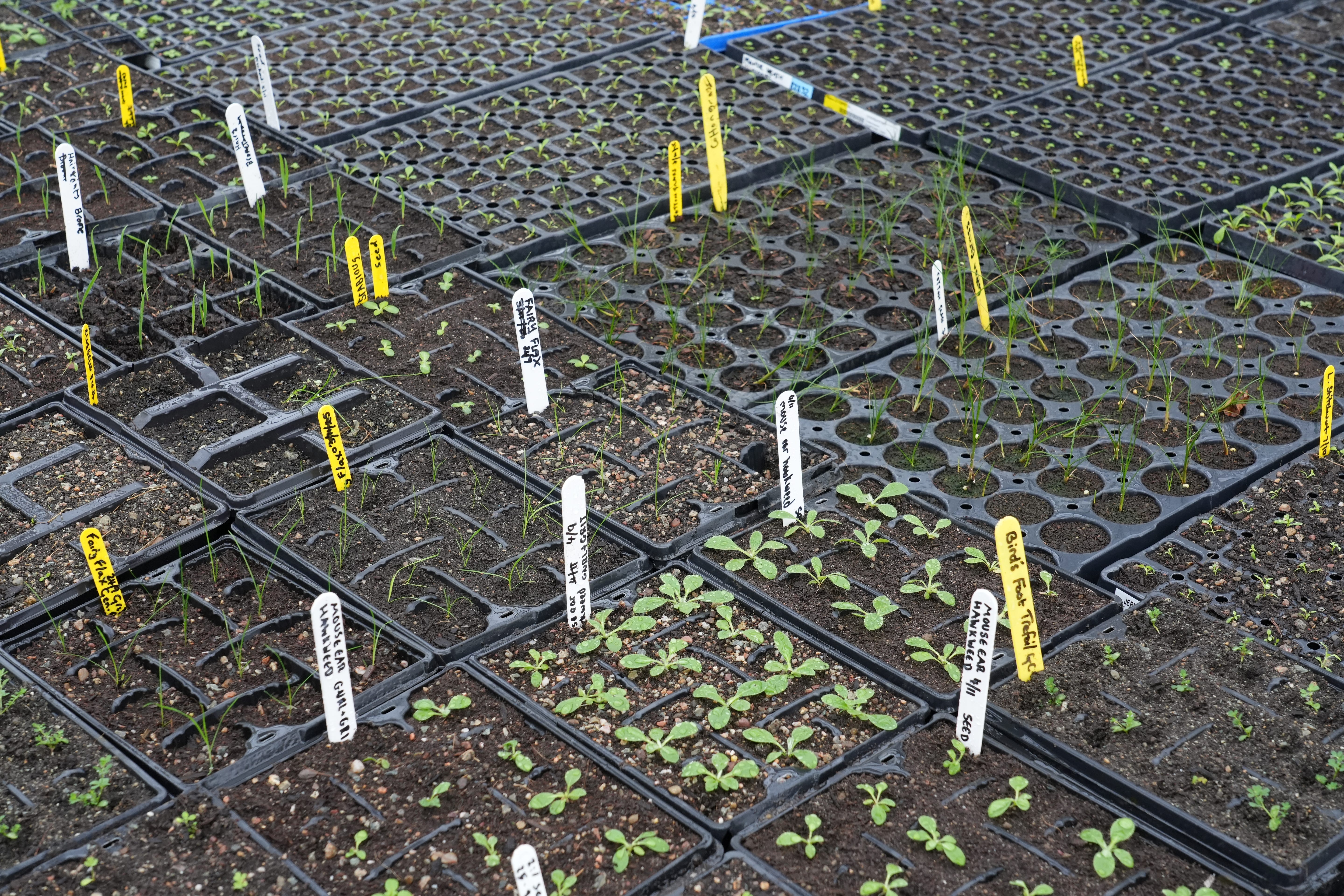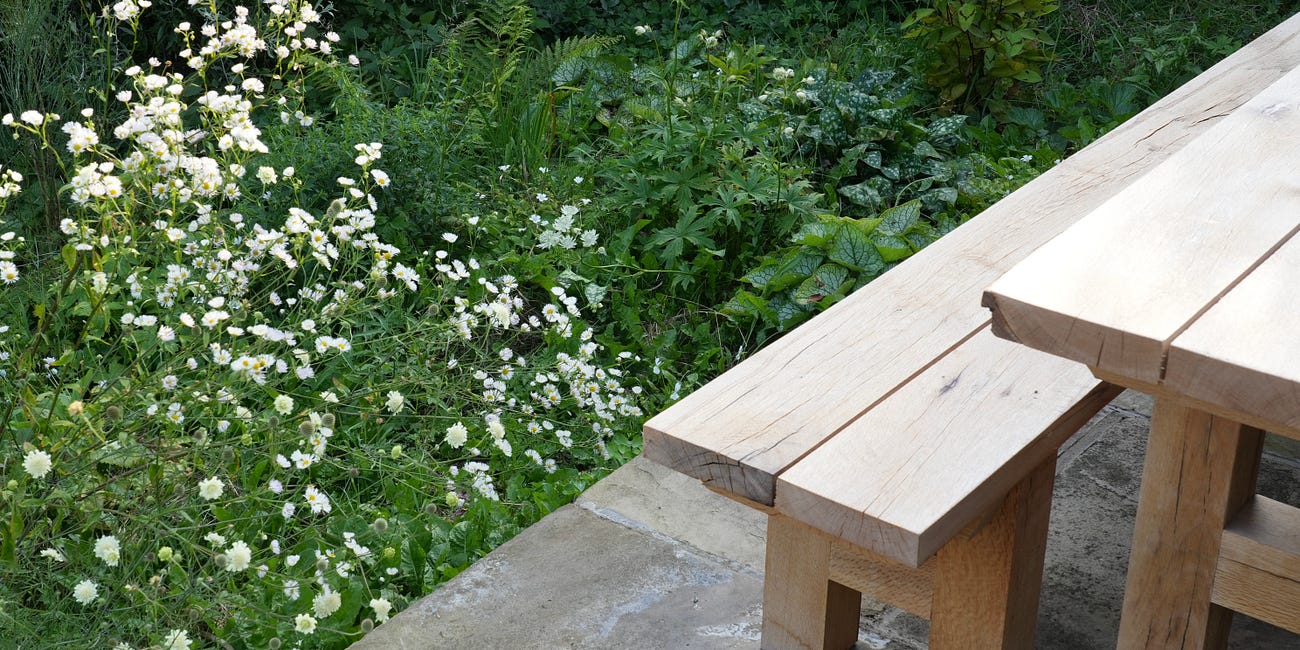Preserving genetic diversity of wild plants
Halifax project demonstrates how communities are helping local plant populations
In the centre of Halifax, West Yorkshire, I visited the newly created Calderdale Plant Sanctuary, a project funded for a year by Natural England. There I met a team of volunteers enthusiastically propagating wild plants from the surrounding area. Led by Gill Wrigley who expanded her role from growing sphagnum mosses for the local moors into growing important wild grasses, ferns and flowers.
The project is a collaboration with local naturalist Steve Hindle (known affectionately as Peachy Steve), who is recognised locally and nationally for his work surveying grassland fungi. His painstaking surveys of Calderdale’s grasslands in recent years have enabled him to find areas of ancient habitat. Habitats that likely have plants which have grown and evolved in those particular spots over hundreds if not thousands of years.
“Everything here is grown from seed collected from these important habitats,” says Gill, “so we know they’re likely to be strains that have existed in Calderdale for a long time.”

Growing wild plants from local populations has become increasingly recognised as essential for three key reasons. First, as Gill points out, “these locally native species can often be better for the insects that evolved alongside them.”
Second, habitats around the world have dwindled due to construction and intensive industrial farming practices reducing biodiversity - the UK has one of the lowest number of undamaged ancient habitats in the world. Thirdly, climate change is causing big shifts in conditions, altering what species can survive and where.
Genetic diversity in plant species offers hope. Each species of wildflower will have a huge range of regional differences in their genetics. This is because of tiny variations in the conditions in which they’ve grown. Over time the plants adapt and evolve to better manage those different conditions. For instance, the same species could potentially have more hardiness, drought tolerance or disease resistance depending on how they adapted to each region across the UK.
As the climate changes or new insect, virus and fungal species are accidentally introduced, a regional adaptation could offer resistance. Currently we don’t know how wild plant species will respond to new pressures, making projects like the Calderdale Plant Sanctuary so precious.
As gardeners, we can help by supporting projects like this and trying to source wildflower seeds and plug plants from the local area rather than always buying random seed packets from across the country. In the wilder parts of our garden I have grown wild plants from seeds and spores collected locally where possible for these reasons.

“We’re conducting an experiment by planting half the rough hawkbit seedlings into plain peat-free compost and the other half with a mix of peat-free and lime chippings,” Deborah tells me as she continues the delicate work.
All of the plants grown at the Calderdale Plant Sanctuary have been sourced from habitats known to be highly likely to contain native plants that evolved in Calderdale. All batches of seedlings are labelled with exactly where they came from, such as the specific field or woodland. Dates of sowing and full species name are included. Having grown lots of wildflowers myself, I can vouch for how easily tiny seedlings are jumbled when it comes to planting a year later!
“I don’t have a garden at home any more, just a balcony but I’ve always grown things from when I was younger, it’s relaxing to spend time here with everyone,” says volunteer Debs, who is a nurse in the local hospital. The others agree, it’s a fun social activity as well as an important task. Finding the process of sowing and growing mindful, a calming break from a busy world.

It’s an amazing project because the team are finding the most precious pockets of wild plants and then giving them a helping hand. “There are some surprising plants that we’re growing because they should be quite widespread but we’re finding they aren’t in some areas,” explains Gill, “plants like red campion and hawkweeds, you’d think they’d be everywhere - and they should be - but they aren’t.”
Among the more common species are rarer or more challenging wild plants to grow, including eyebright, Euphrasia spp. Most gardeners will be familiar with yellow rattle, known as the meadow maker, because it parasitises grasses and other plants by attaching to their roots and weakening them, helping flowering plants to grow. Eyebright carries out the same role in acid grasslands and should be prevalent all around Calderdale.
Eyebright is a fascinating genus because there are many different species that all look superficially similar, even in botanist circles people often have to turn to Euphrasia specialists for an accurate DNA identification.
The team are treating the project as an experiment because for many of the less showy wildflowers there aren’t always guides on how to best germinate and grow them. Success was found growing yellow rattle plugs by sowing the seeds into a tray of already growing grass seedlings, giving the parasitic wildflowers healthy grass roots to feed off. Gill decided to try the same technique with the newly collected eyebright seeds. Early results look promising as the first eyebright seedlings have emerged.
In another large glasshouse hundreds of trays blanket the floor, full of different species of sphagnum moss. These are part of the Sphagnum Project funded by the National Lottery. The mosses are eventually planted out on damaged areas of peat on the surrounding moors.
“Everything here is grown in peat-free compost,” says Gill to my delight - proving that even the plants that make peat can be grown peat-free, “we grow them vegetatively by laying pieces of moss on the surface and off they go.”

The Sphagnum Project and Calderdale Plant Sanctuary have been recognised with a number of awards for the impressive work and deservedly so. Gill has even visited Downing Street to explain what the team has learnt.
Although the projects are reliant on funding, I found what Gill and the team are doing to be a perfect demonstration of people power. Working with ecologists to study the local nature informing a plan of action to help, volunteer gardeners then grow plants before later planting them in the wild. Helping maintain the area’s local plant diversity and in turn, wildlife that depend on it.
If you live locally and would like to enquire about volunteering for the project please visit this page.
Three useful wild geraniums
Some call them weeds but I love these three mini geraniums. They are ethereal and cheery, not to mention incredibly useful!
What materials should a patio or seating area be made from?
Seating areas in gardens for the species Homo sapiens (aka us) are important because they provide a firm area to sit or dine, socialise, work or read outdoors. This connects us with the rest of nature in ways rooms inside our house can’t.







